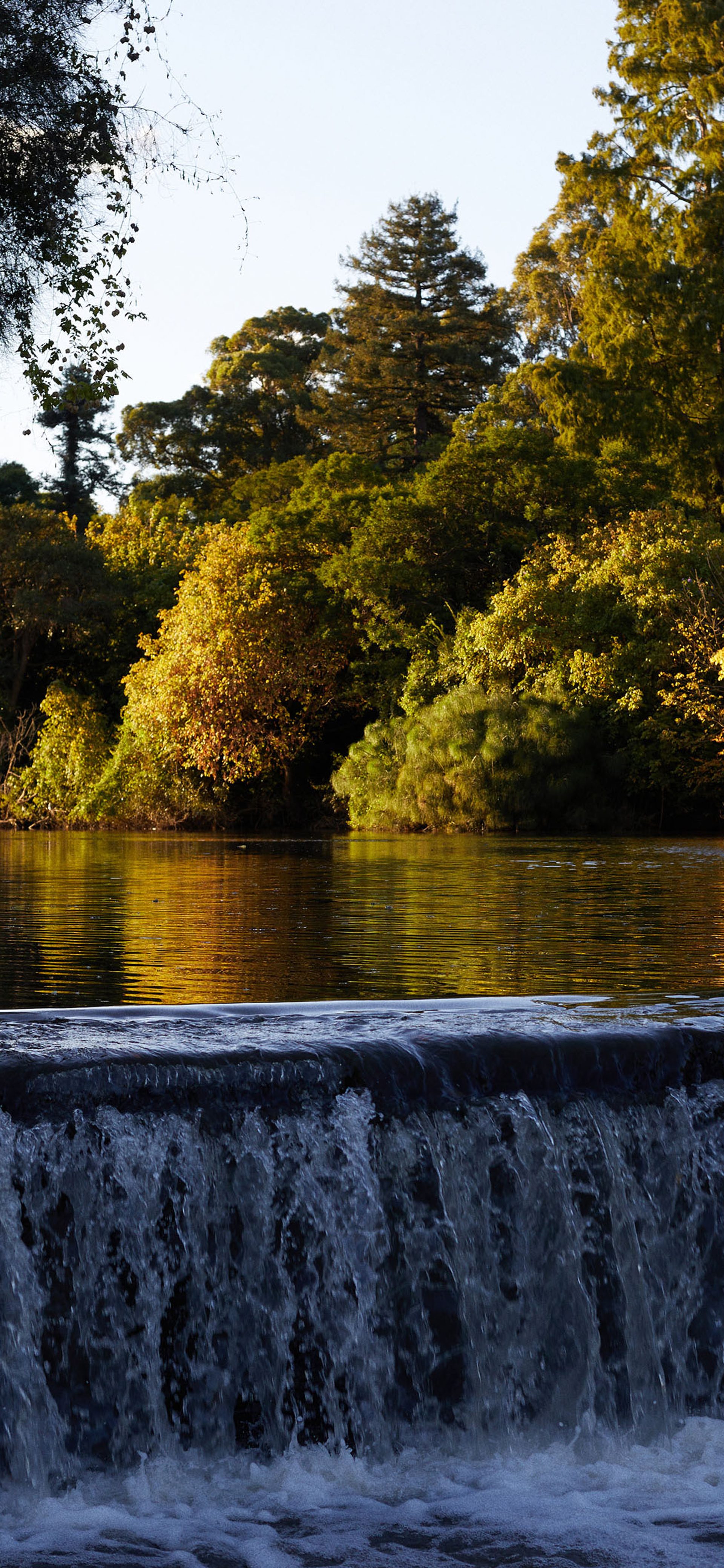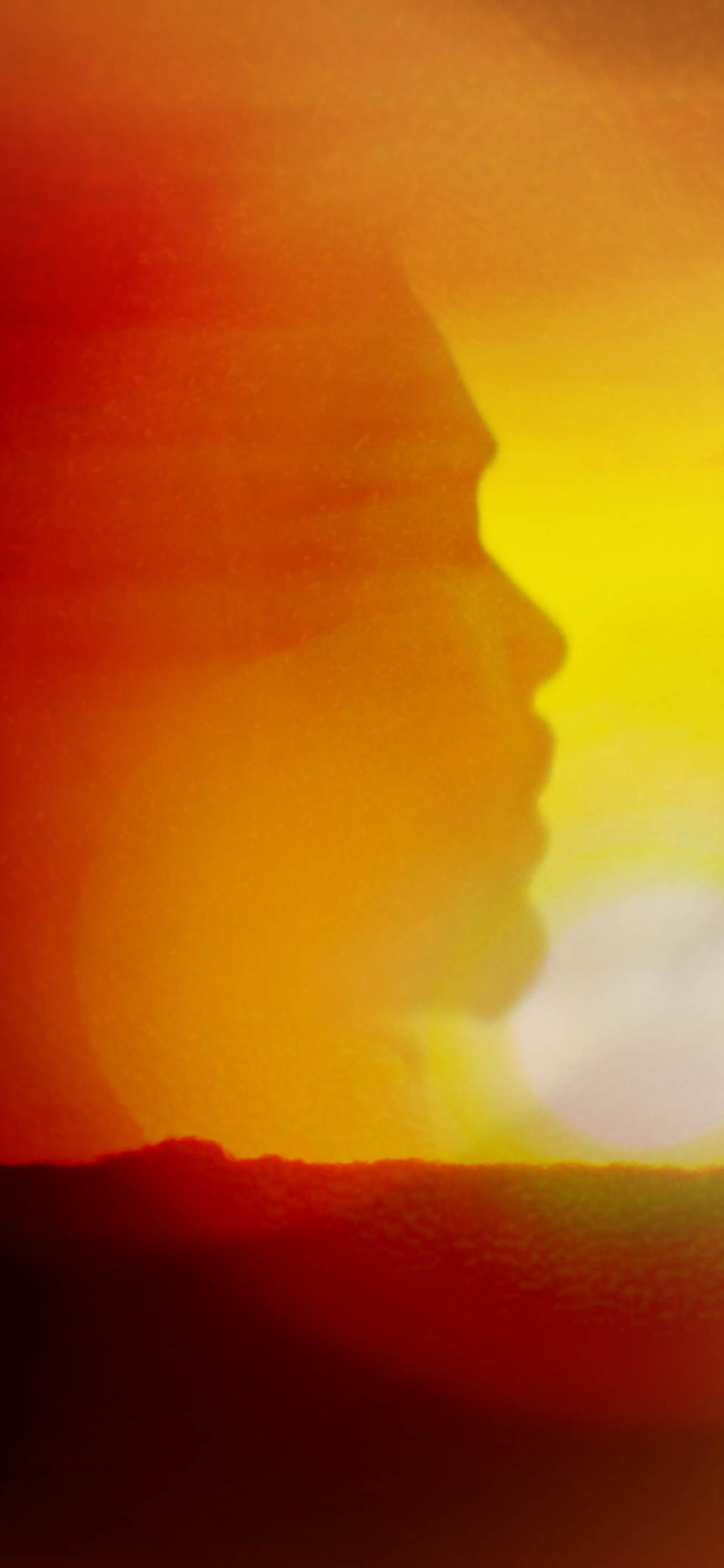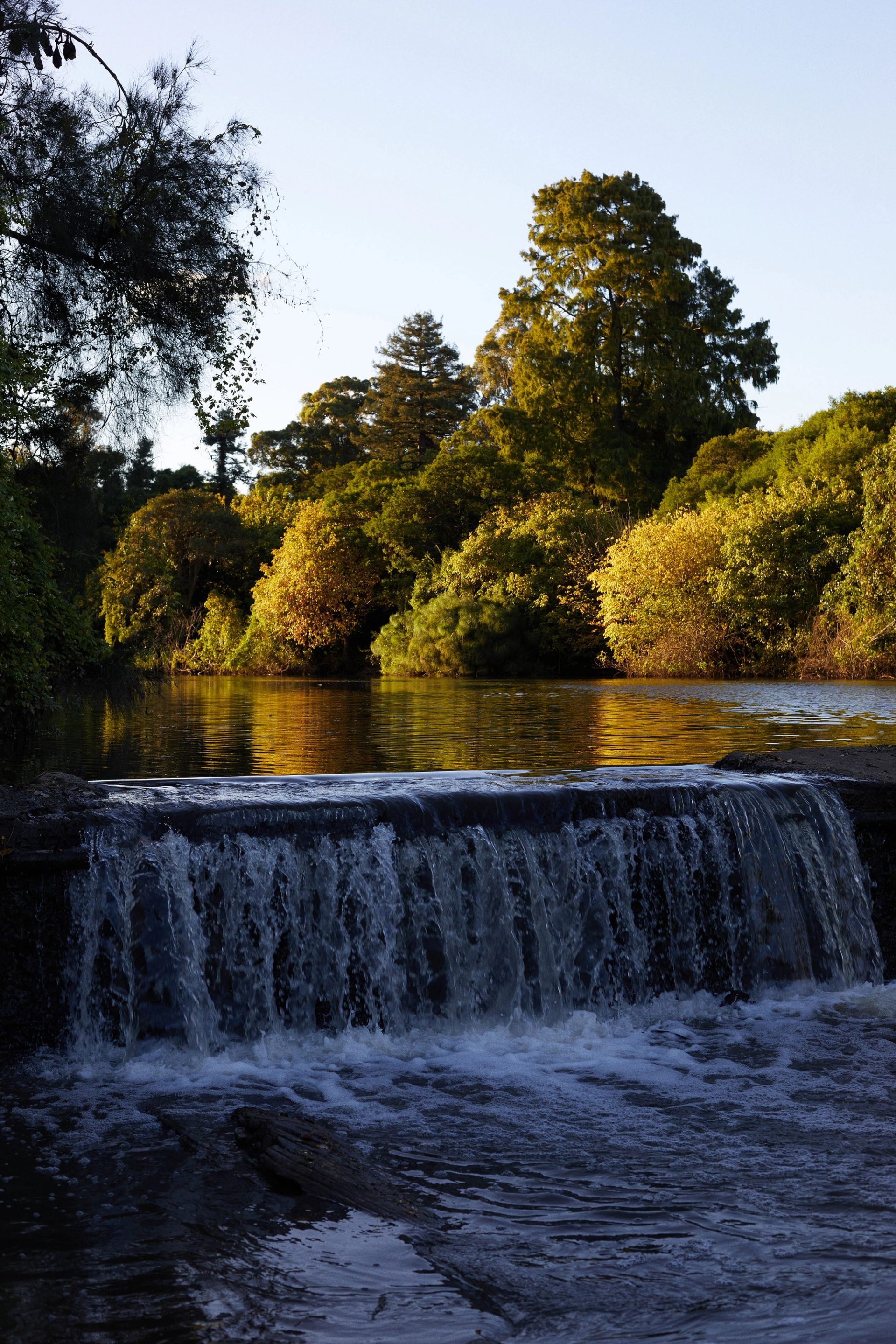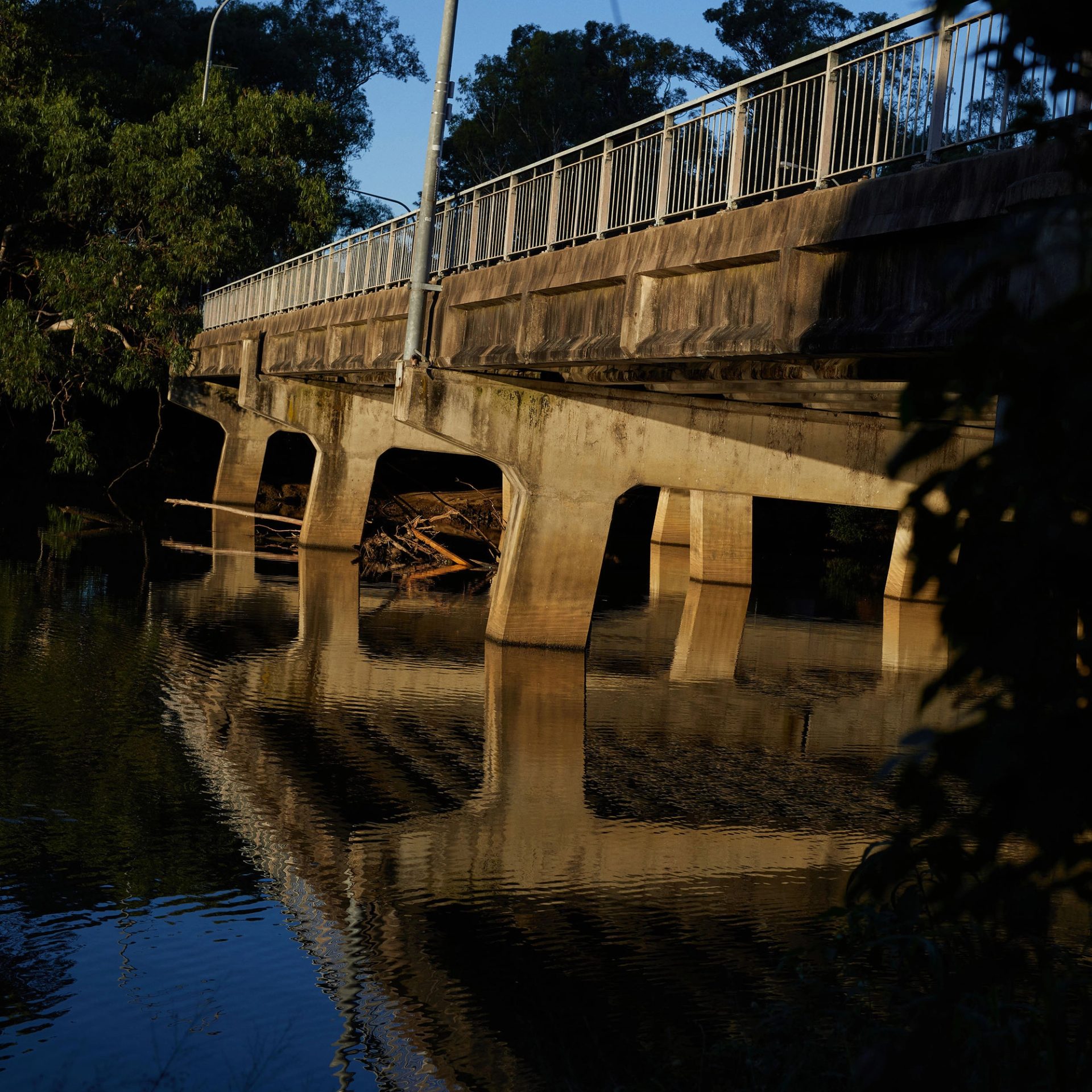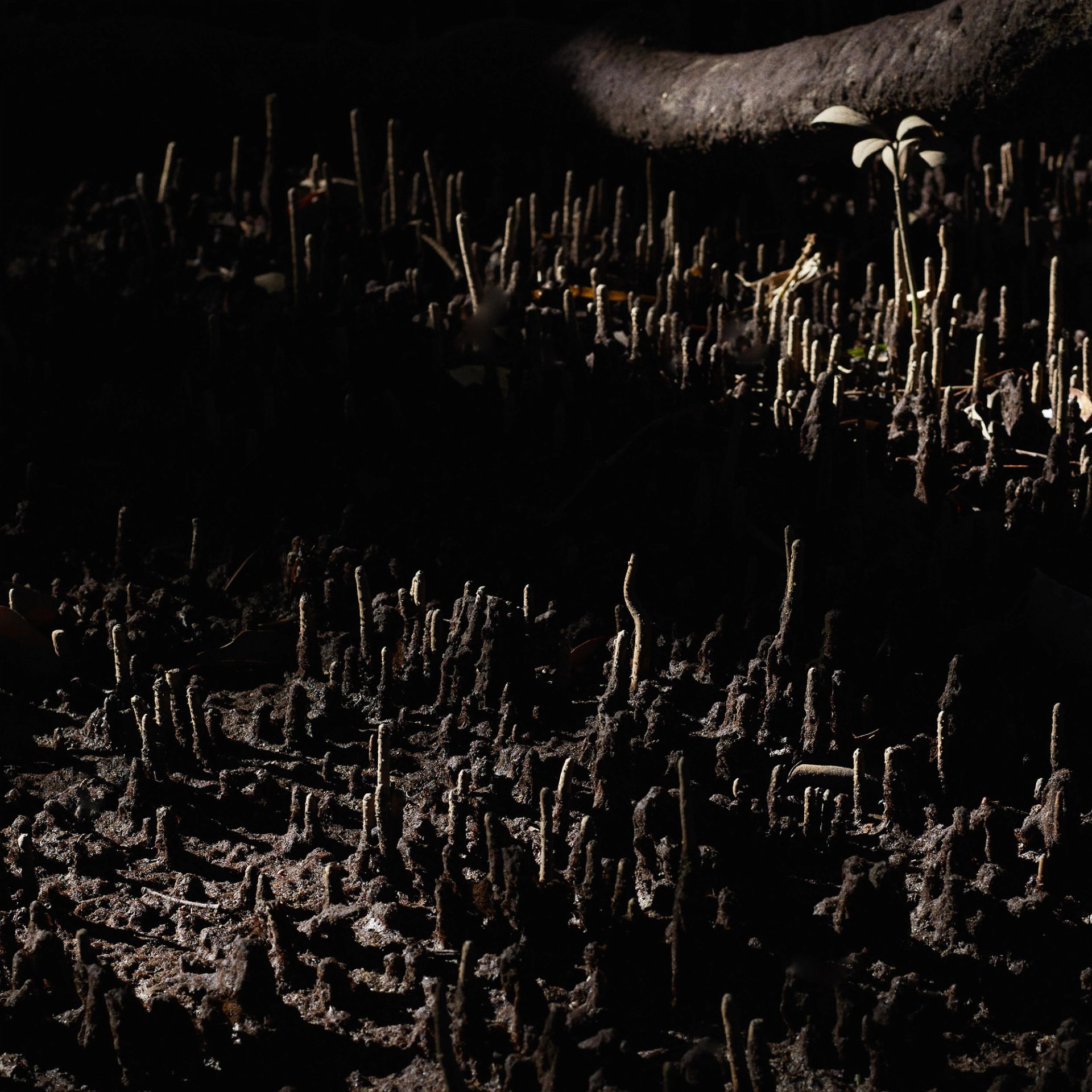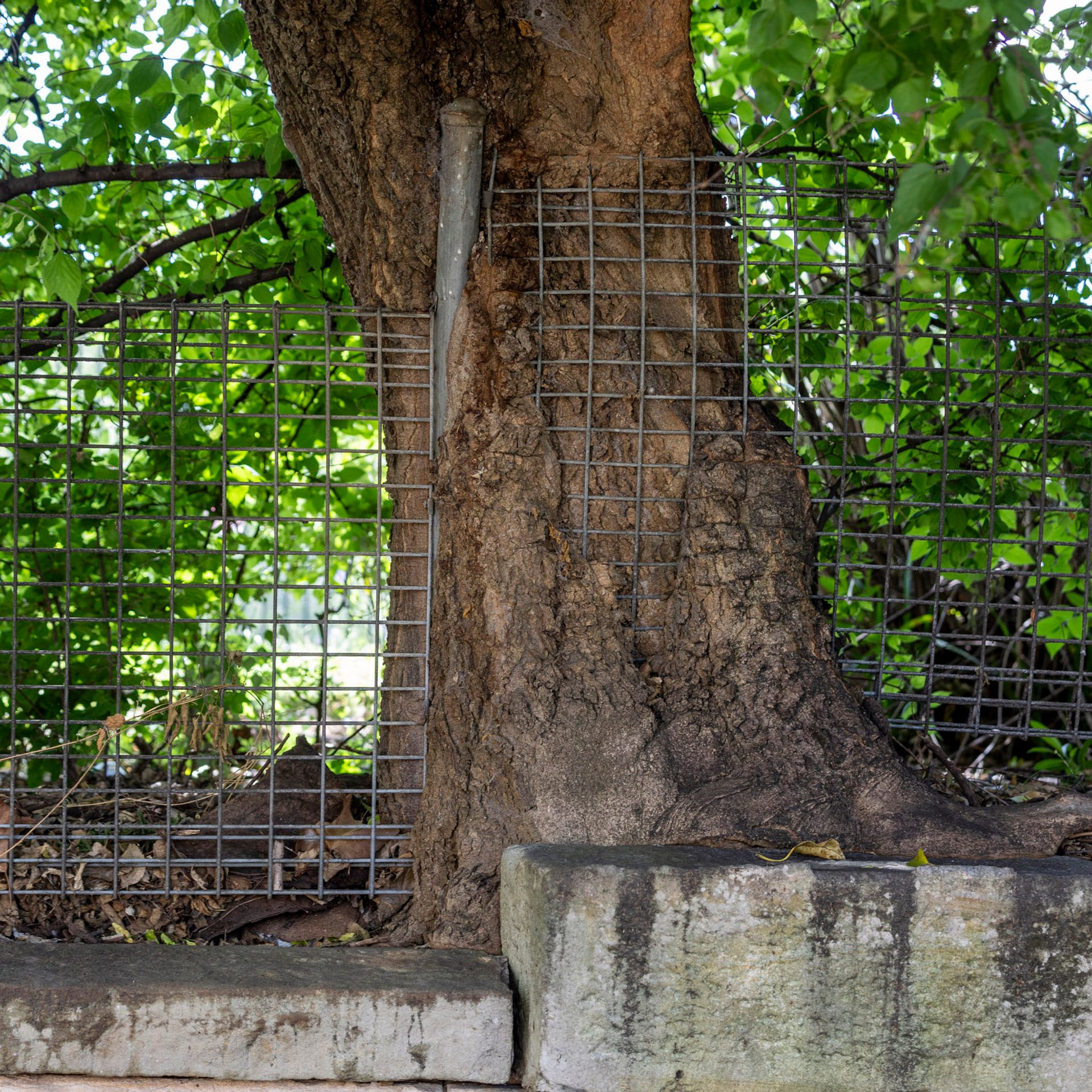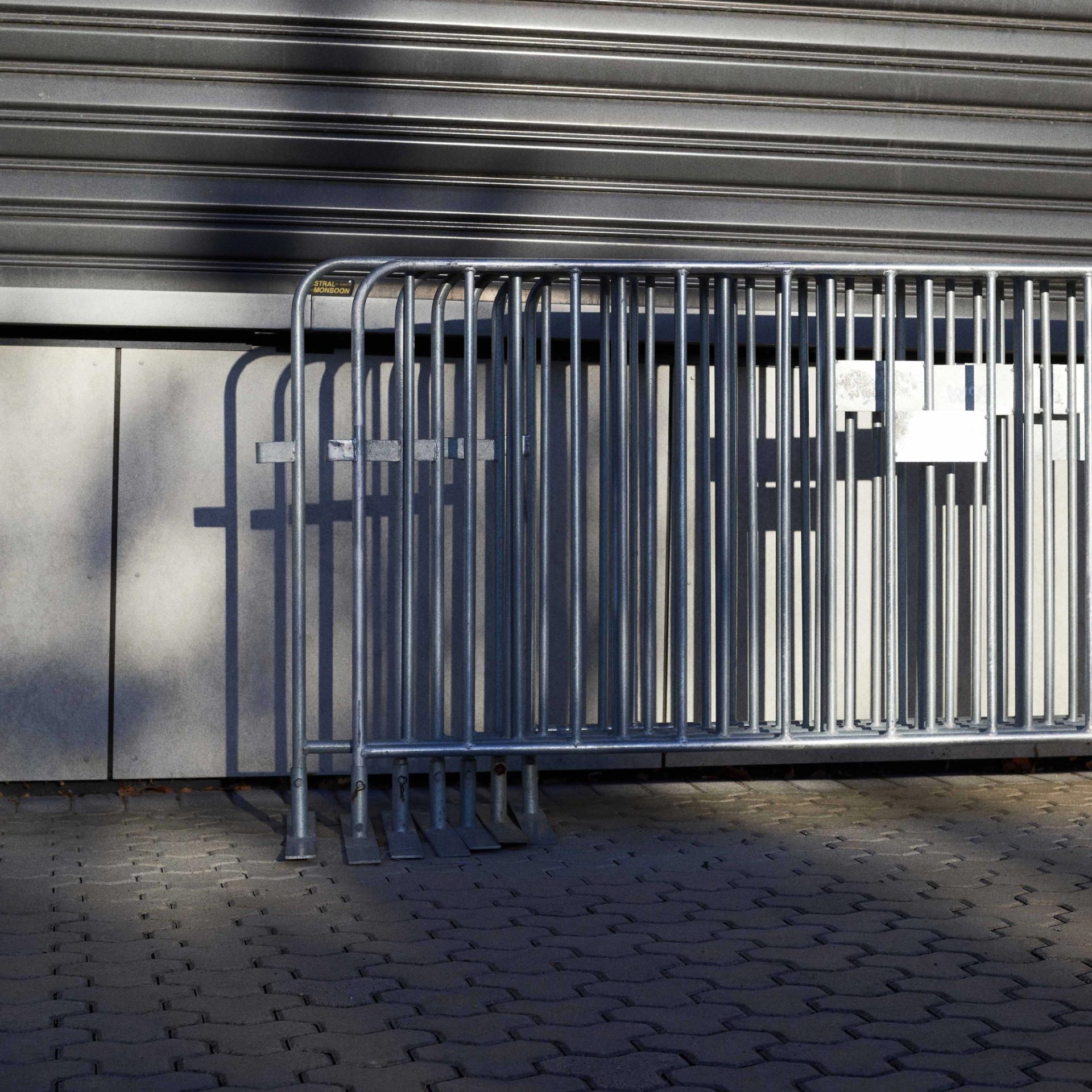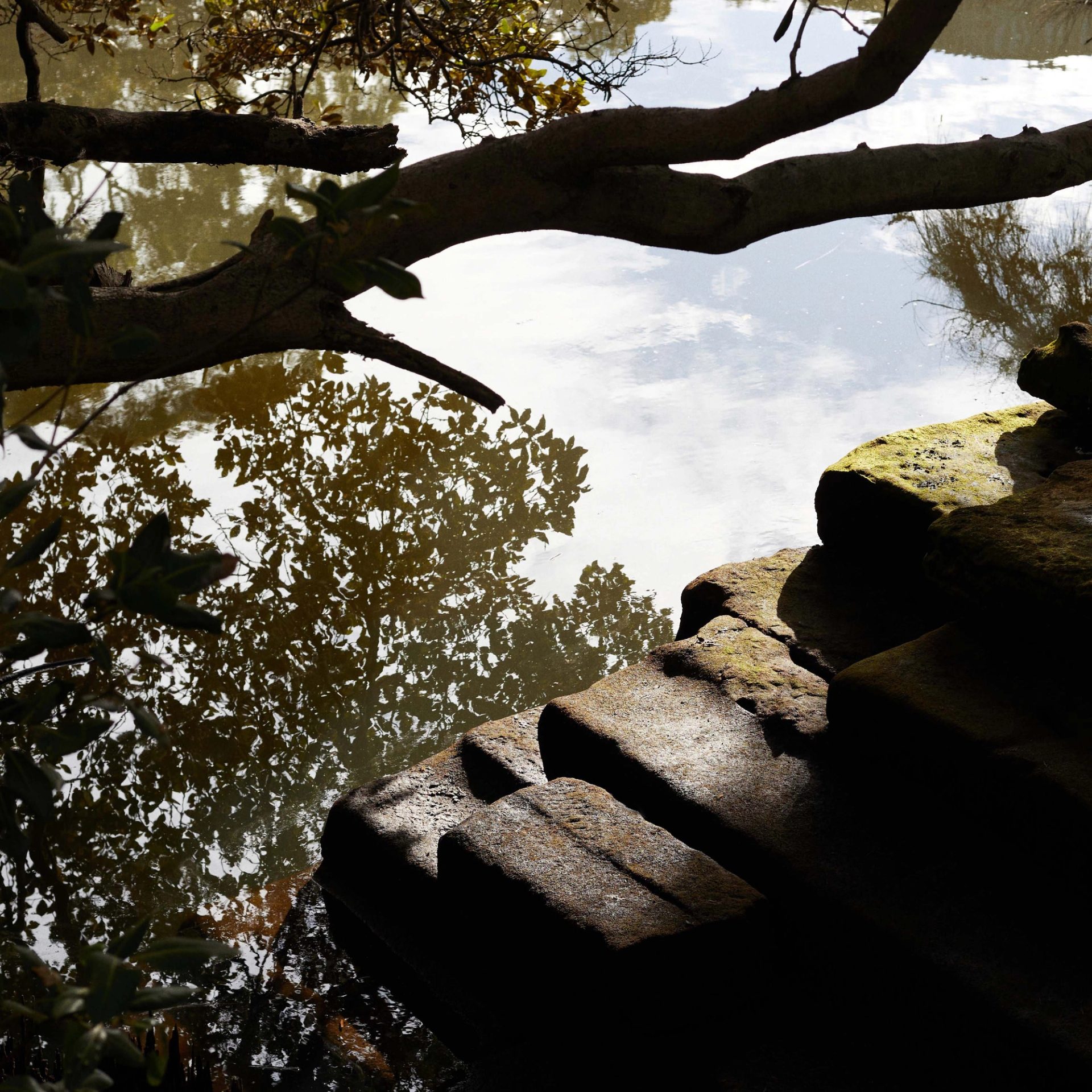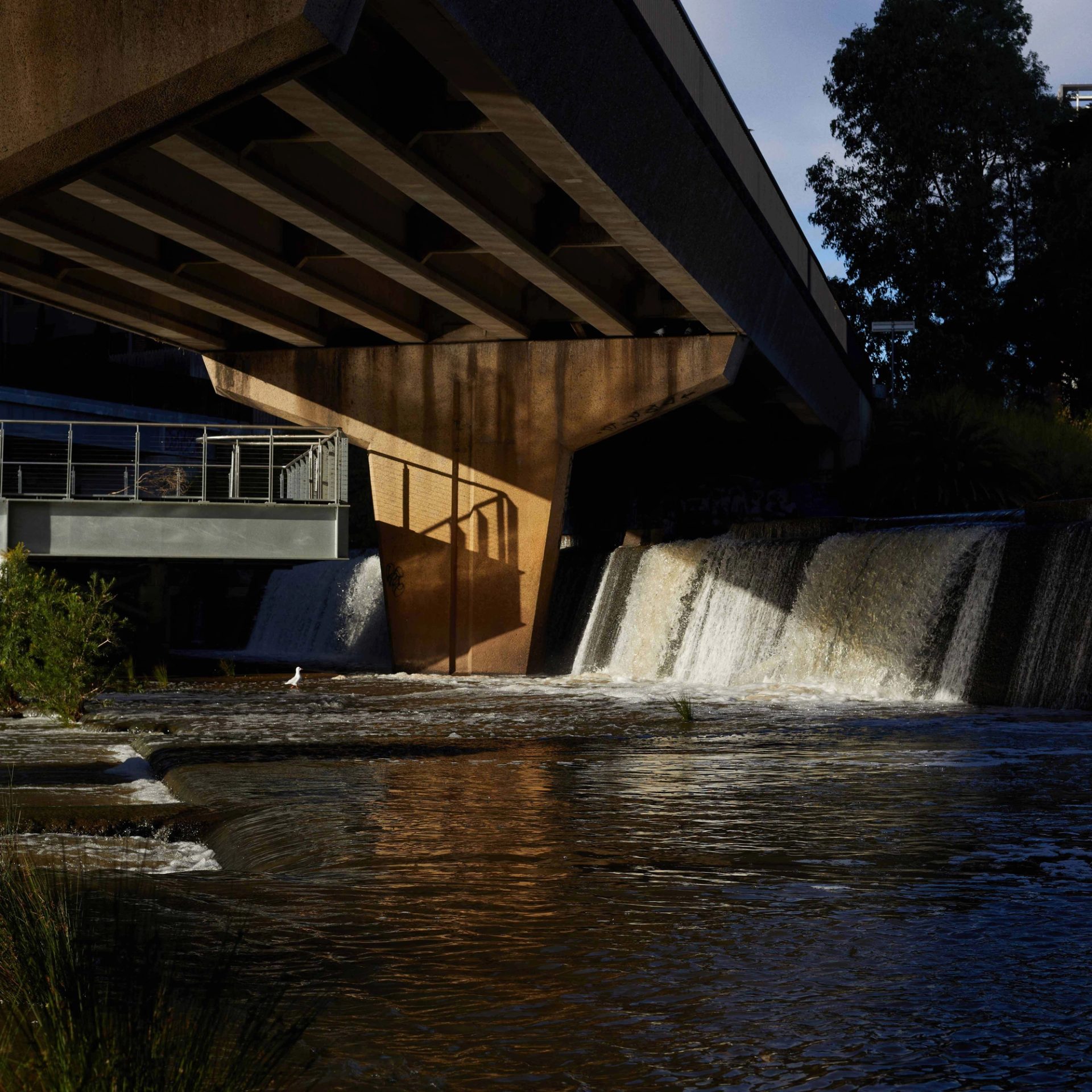Speaking to Water

Vivian Pham was commissioned by Powerhouse to write this essay for The River, a series of new writing responding to the Parramatta River.
Speaking to Water
Rivers, before they were rivers, were metaphors.
One morning, the sun simpered in through my bedroom window in Parramatta and plastered its peculiar apricot light all over my eyelids, as suns do in April. I opened my eyes, rearranged my dream-filled head on my pillow, and looked over at my desk. On that desk sat a diary which had been blank since the new year, an anxious stack of crumpled papers and the books I most resentfully admire. I left my computer on the previous night, as if keeping it connected to electricity would tempt it to ghost write the ever-forthcoming novel. Not being able to write has monstrously cluttered my life. Almost as soon as I wake up I cannot bear being in this room. I think bitterly of Virginia Woolf’s insistence on having one and wrap myself in the greyest and most writerly coat I own and rush downstairs. Here is a coat that cries out to be cloaked in mist. Here is a writer who wishes against her own disposition to be outdoors. To the river then, I say to myself, trying to calm my nerves which have been frayed since the age of thirteen.
Aside from dreams, rivers may be the closest thing writers have to a natural habitat. They are heavy with imagery, swollen with meaning and fairly often the sacred scenery of proverbs. Growing up, I admired historians and archaeologists more than anyone – even doctors, to my mother’s discontent. I imagined that only scholars of classical antiquity were able to conjure up a river and hold all time, all stories and all narratives in their palms. I wanted so badly for my palms to be etched with rivers. Take the Styx, for example, which for the ancient Greeks represented the mythological boundary between the world of the living and that of the dead, just as Parramatta River physically marks the meeting of saltwater and freshwater. Or the Nile, which was so vital to ancient Egyptian society that it was the way the deceased were believed to journey through the afterworld to join Osiris. Royals and nobility were found buried with full size boats – and rowers! I have these fawning, unfaithful thoughts about other rivers – real and mythic – as I walk towards Parramatta’s own ancient waterway. I pass Eat Street’s establishments of cold pizza and corporate lunches, melted chocolate and romance, chicken schnitzels and racehorse luck, trying not to make eye contact with bushy-tailed vendors, and skip hurriedly across Lennox Bridge.
I have arrived. It has taken in one sense six minutes of brisk walking, and in another, twenty-three years of longing, to get here.

I grew up in Sefton, a few suburbs to the south of Parramatta, where the most notable natural feature was the golf course no one I knew ever set foot in. For the most part, I grew up within the exact parameters of my childhood home and my local primary school, with hardly any memories of anywhere outside these two universes. Corner shops and parks existed only on my periphery. Now I know how close everything was, how connected I was to the rest of world, if only by a train line. But until I was nineteen and my sister and I left home – a common side effect of being disowned – the Rest of the World was a faraway continent on an archaic map, and Sefton was an undiscovered island off the coast. Parramatta River was as exotic to me as the Amazon.
This is how I like to justify my profound lack of geographical knowledge, but this ignorance isn’t only to do with space. I think it also has to do with story and with time. I have never been to Greece or Egypt, yet I have more memories of these places – even imaginary memories – than I do of Parramatta River, the place I now call home. Day after day, I walk by the same brown, sometimes shimmery water. Perhaps walking past is a more faithful report of the action. Usually I take so little notice of the body that it may as well be a corpse. I meander. I drag my feet. A cyclist will speed past every once in a while, with a bell ringing out to announce their superior athleticism.
Stories, before they were stories, were echoes.
It doesn’t take long to realise the sparse ‘facts’ I know about Parramatta River’s history I’ve fished from the colonial archive. I know, for example, that the Lennox Bridge was constructed with convict labour and that the river is overlooked by Australia's oldest public building, Old Government House – and ever-rising towers of dark glass. The archive is all I see and everywhere I go. It hangs over the river; it is the swarm of midges copulating in an otherwise golden morning. It swallows story; it spits out information; it eclipses shadow; it insists upon knowing all, telling all – even that which resists being told – and keeping all. As I walk through the haunted archive, I send out a wish: that the water will speak to me and tell me what it was before it was archived. At that moment I pass the slightly worn signage that dots the river, explaining certain features and artworks associated with the landscape. The one titled ‘Bush Tucker – Fish’ is sepia-tinted but easy to read; ‘The Eel and the Convergence of Salt and Fresh Water’ is decipherable and ‘Baludarri the Young Warrior’ is even vibrant. But covered with overgrown grass, weathered, and barely a whisper: ‘The Burramattagal People’.
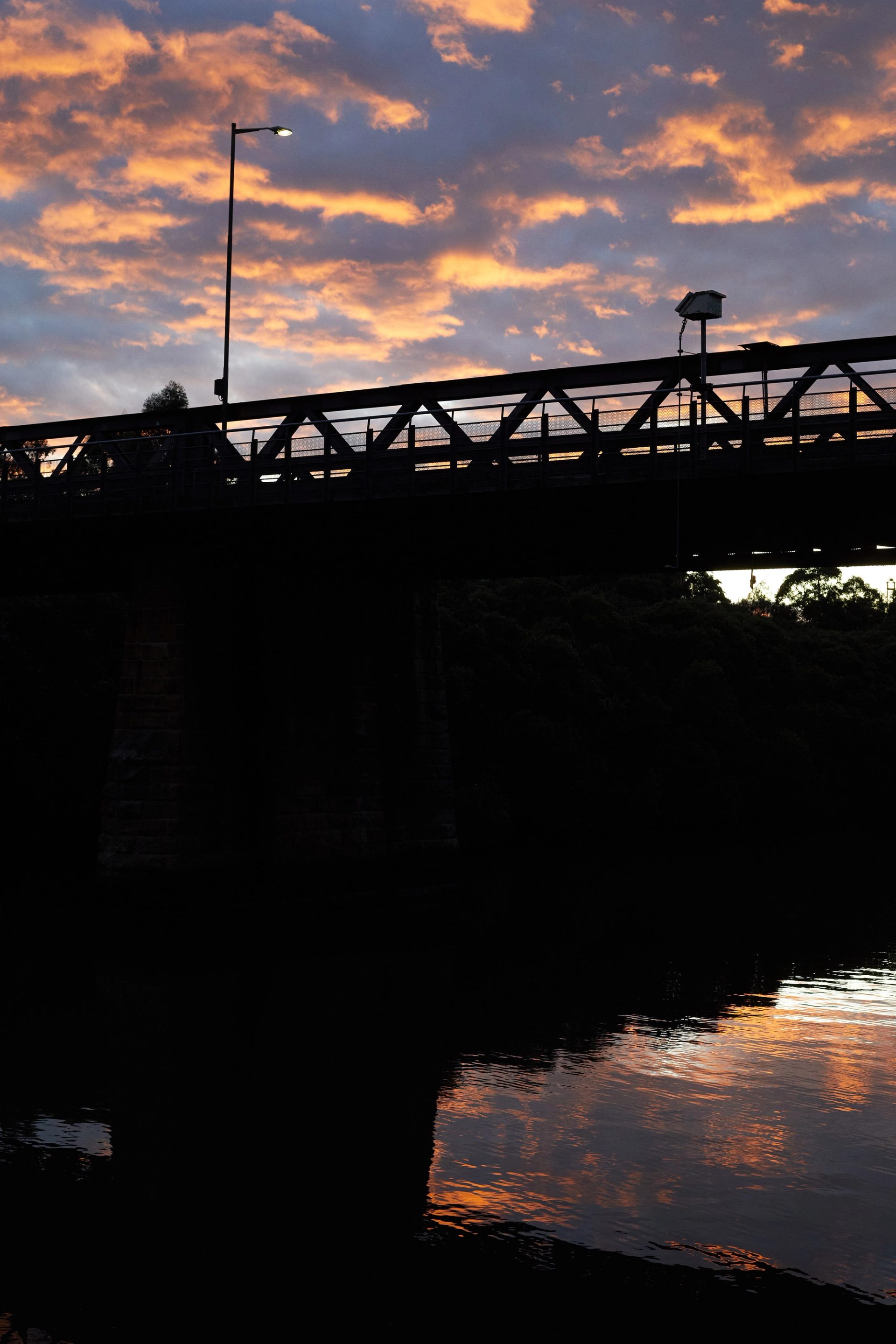
To speak a language is to acquire a voice, to assume a self among other selves. I am at the moment alone – but surrounded by lineages of community and selfhood. In what tone, I wonder, might the mouth of Parramatta River, embodying and embodied by its connection to the Burramattagal clan, utter the word ‘civilisation’, this zone where deep history converges with luxury apartment-dwelling, the silence of water with the seasonal migration of fish, resistance with settlement and influenza with resilience. As I walk, I wonder too about the way oral cultures around the world have been forced to write themselves back into history as a matter of survival, while at the same time being condemned for regressing into the past.
In the poem Allegory of the Land, Inrasara, a poet from the oldest Cham village in Vietnam writes:
One line of proverb – one verse of folk song
half a child’s lullaby – one page of ancient poetry
I search and gather
like a child seeking a tiny pebble
(pebbles that adults carelessly step past)
to build a castle for only myself to live in
a castle one day they’ll use for shelter from the rain*
When I was little, I thought I might find the truth of the universe in a book one day. Perhaps I wanted to be the one to write it. This walk by Parramatta River teaches me that long before I fell in love with words on pages, the world was one of sound and touch. Of breath, song and spoken memory. Of tree branches falling. Of ducks calling their children home. Of the water falling from a bird’s wings. Of rivers gurgling, sleeping, remembering. Words were fragile; this is why Inrasara describes them as tiny pebbles. And yet the moment we think we’ve seen them for what they truly are, before our eyes they become castles.
When I was seventeen, my father decided it was time to tell me, in all the detail he could muster, the story of fleeing Vietnam by boat when he was my age. I wrote this story, in his words and its multiple manifestations, in a notebook, which I left in my old bedroom. It is both his story and the story of him telling it. It is also the story of how where I come from is now the most foreign place on this earth, since no place is as foreign as the place you used to call home. The notebook is either still there or in the garbage along with my other belongings; either way it is lost to me. As a dutiful, albeit disavowed, daughter, it gnaws at me that I will never be able to find the exact words to memorialise his experience, to tame the sea of mirrors that he and countless others night after night offered their most courageous reflections to. Therefore, I don’t lose hope. It is my only inheritance. My father’s story tells me I do not come from a place or a person, but a journey. One of survival. And how else did he survive but by dissolving the border between past and present, so that in each of us will always live two seventeen-year-olds, speaking through one infinite story.
I call myself a writer because of the stories I’ve gotten down, but what of the stories I will never be able to recall, the ones I’ve heard in passing, the fragments of other people’s lives which have made me somehow whole? As I walk beside Parramatta River, feeling the breath of oral traditions of storytelling that sprung from in and around this water, I feel as though the thought alone is somehow maintaining continuity between written and spoken worlds. I circle back to Lennox Bridge and come up the stairs, and am faced with the Riverside Theatre, an institution which houses both big productions and showings of homemade dramatic art. I’ve seen seemingly slapstick shows that made me shed my first tears at the strange sensation of being in a dark room with people who looked like me on stage, illuminated; blood of my blood, flesh of my flesh.

As I walk on, still feeling the river’s presence, I remember a man who sat on the steps outside an abandoned bank on George Street writing poems for spare change. The sincerity of that trade has stuck with me and continues to remind me of the poets who lost pretension and somehow found their true voice later on in their career. I think of my true voice and what it might sound like as I walk by Parramatta River. I used to think being a great writer relied upon sitting in your room, crystallising your solitude into words and arranging those words into narrative, but the river’s constant muttering convinces me otherwise. When I speak, now, I hear in my cadence a piece of every storyteller I’ve known.
I met someone by this river recently, who told me a story of an old man and his unwilling grandson. The pair had caught a fish and were returning it to the water. A couple stopped by to ask if they could take the catch home instead. The old man explained that no fish from Parramatta River could be eaten because the water is so badly contaminated. I imagine there was a bit of good-natured bickering, and I am sure the fish are grateful for the pollution on days they happen to have their bottom lips hooked. I hope one day the saltwater from the journeys I know will meet the memory of freshwater in this land, and know there is no longer need for thirst. I hope to write stories that feel like rivers, gathering the strength to go on by first dissolving.
Words, before they were words, were water.
*From The Purification Festival in April by Inrasara, The Culture & Literature Publishing House, Vietnam, 2015. Translated by Alec G. Schachner.
First Nations languages are part of oral traditions that have existed for millennia and do not directly translate into the Roman alphabet, as used in English. Therefore, First Nations languages’ sounds have been interpreted in many different spellings. This means that the same words, including language groups and place names may be spelled in two or three different ways. For this publication, we have privileged the spellings of First Nations words the way the authors have suggested unless advised otherwise by Traditional Owners.
Writer
Vivian Pham is a Vietnamese novelist, essayist, poet and aspiring folklorist from South Western Sydney. In high school she wrote a novel called The Coconut Children, which was published in March 2020 by Penguin Random House. In 2021 she was named one of The Sydney Morning Herald Best Young Australian Novelists and she won the Matt Richell Award for New Writer of the Year at the Australian Book Industry Awards. Vivian holds a Bachelor of Arts with a double major in Philosophy and Creative Writing. She’s currently adapting The Coconut Children for stage and screen.
The River
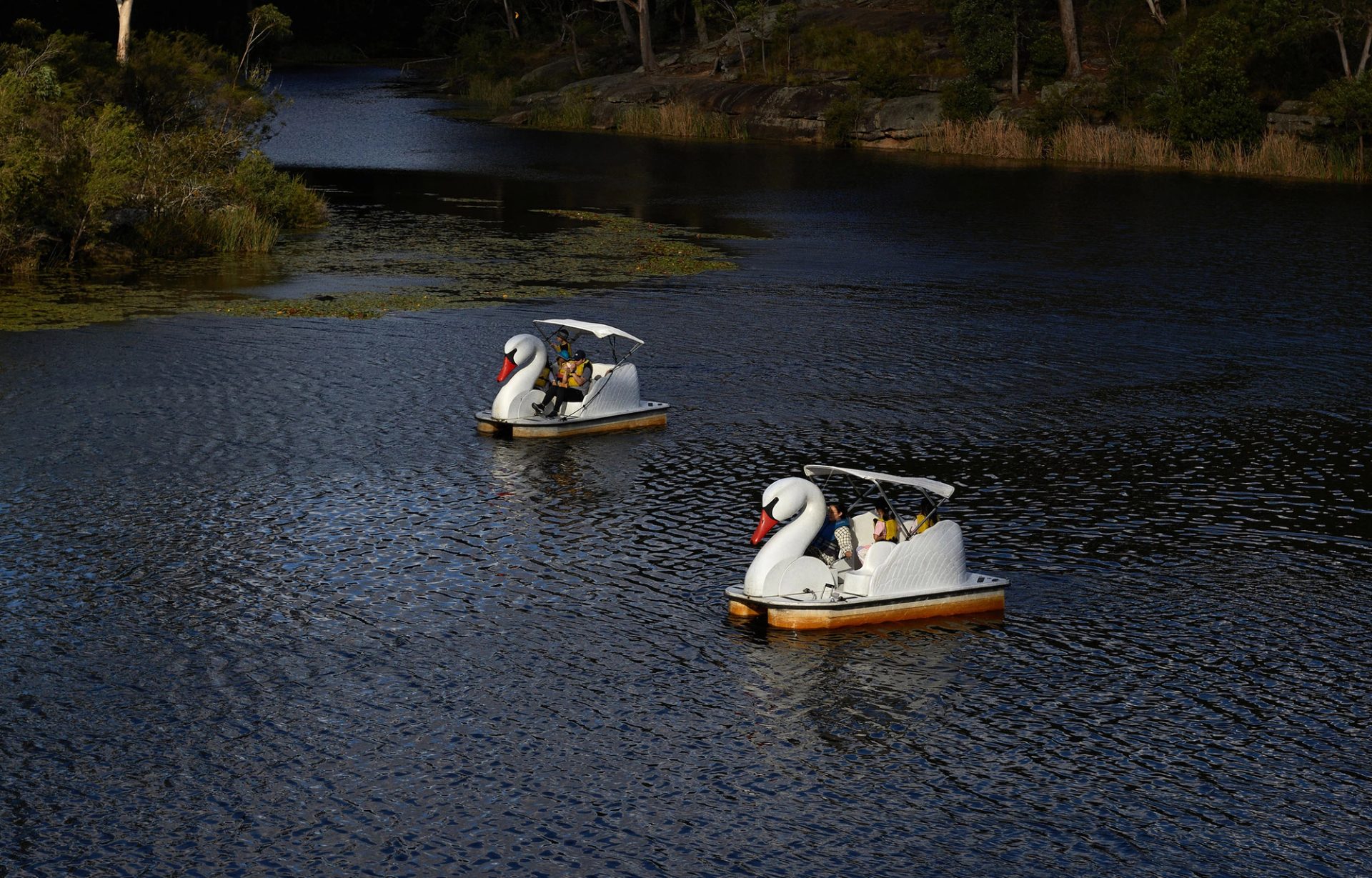
The River is a collection of new Australian writing and photography responding to the landscape, communities and histories surrounding the Parramatta River. Featuring Lachlan Brown, Willem Brussen, Felicity Castagna, Anwen Crawford, Maarama Kāmira, Joseph Mayers, Fiona Murphy, Conor O’Brien, Jiva Parthipan and Vivian Pham.
Writer: Vivian Pham
Commissioning Editor: Felicity Castagna
Head of Writing, Powerhouse: Jemma Birrell
First Nations Cultural Advisors: Beau James, Nathan Mudyi Sentance
Senior Editor, Powerhouse: Katrina O’Brien
Photos: Conor O’Brien











